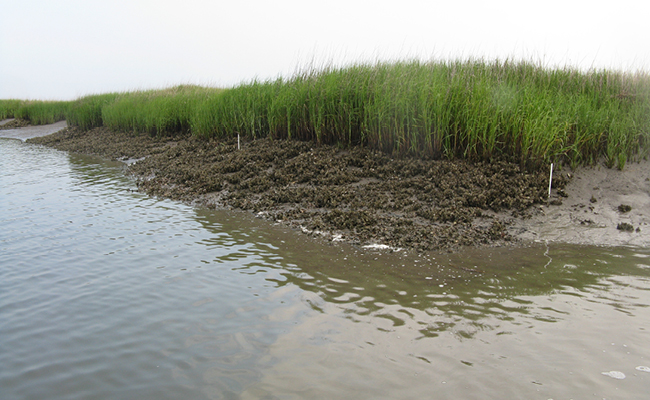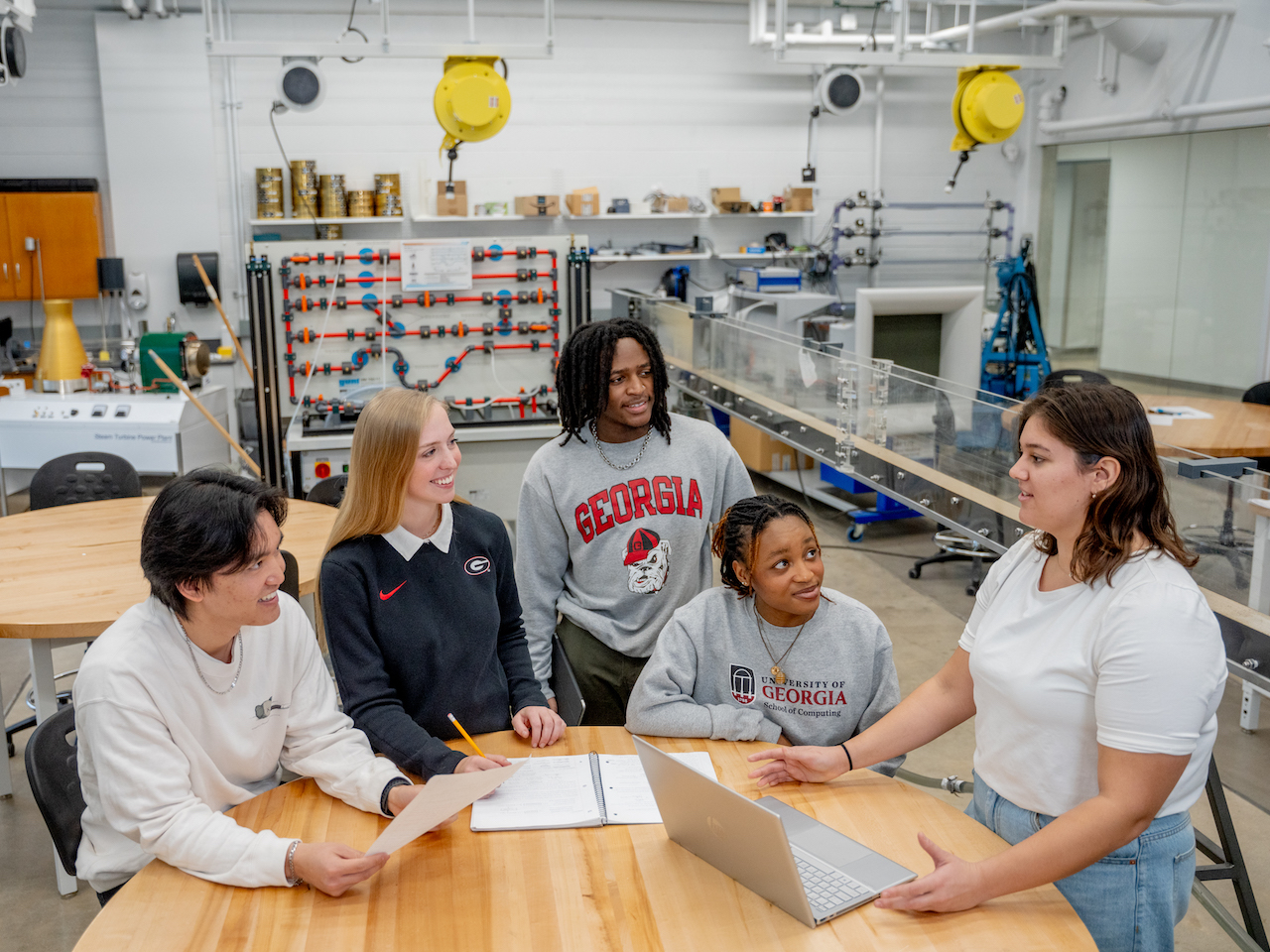 From beavers, which stop up flowing water to create the pools of water they depend upon, to oysters, which filter seawater and stabilize the shoreline to create more habitat, organisms are constantly engineering their environments for maximum success.
From beavers, which stop up flowing water to create the pools of water they depend upon, to oysters, which filter seawater and stabilize the shoreline to create more habitat, organisms are constantly engineering their environments for maximum success.
Researchers in the University of Georgia’s Institute for Resilient Infrastructure Systems (IRIS), a multi-disciplinary research center housed in the College of Engineering, are particularly interested in this phenomenon. Understanding how ecosystems such as salt marshes and oyster reefs self-adjust to sea level rise and climate change, helps to harness their unique ability to provide storm protection, water quality improvement and erosion control, among other benefits, as an integral part of our coastal infrastructure systems.

Jeb Byers
IRIS researcher Jeb Byers, Meigs Distinguished Teaching Professor of Ecology in UGA’s Odum School of Ecology, hopes to harness this ecological genius by studying how marine organisms change their habitats—in part so that we can learn how to replicate and strengthen these fragile ecosystems to the benefit of both humans and other species using natural infrastructure such as living shorelines and oyster reefs.
“The idea is to think about ways in which organisms create structure, and how it impacts abiotic environment, which in turn impacts the whole community,” Byers said.
This stone has laid relatively unturned in the field of ecology so far—there are not many models or standardized approaches to understand how organisms actually do alter their environments. Byers, his fellow researchers at the University of Georgia, and a group at NCEAS (Santa Barbara) are working to change that.
“This is a difficult thing to standardize,” Byers explained. “Every organism changes its environment in specific and unique ways, and there is no one-size-fits-all approach. However, by looking at systems to determine how organisms are actually changing their environments, we can begin to understand how to use this approach for restoration ecology.”
Byers’ research on this topic has centered specifically on several marine species that alter their environment in substantial and ecologically important ways, including oysters, Spartina grass, horseshoe crabs and tube worms.
“Spartina grass and oysters are both pivotal to their environment in unique ways,” Byers said. “Oysters filter the water column, which increases clarity, stabilize the shoreline in similar ways to cement, protect banks from erosion, secrete sediment, filter and sponge up excess nitrogen and provide habitat for nursery species including juvenile fish and shrimp crabs.”
Spartina grass functions in similar ways, although at higher elevations than oyster reefs. Its roots stabilize the marsh and prevent erosion, and it provides habitat and a food source for nursery species.
Oysters and spartina may also support one another—one of Byers’ graduate students found that along the edge of where each species naturally occurred, the Spartina helped support juvenile oysters by shading them during low tide. And in turn, the oysters protect the bank from erosion, which provides extra real estate for Spartina.
Another animal, the tube worm, lives up to a meter deep in the mud flats of estuaries and uses a periscope to feed through its tube.
“These worms are the only structural species to penetrate that deep into the mud. They actually stabilize the mud flat,” Byers said.
Species like tube worms may provide erosion control. Learning more about the benefits they offer to their ecosystems may provide inspiration for natural ways to control erosion within natural infrastructure projects.
The last species to make the highlight reel is the horseshoe crab—which acts almost as more of an ecosystem excavator than an ecosystem engineer. Byers and a graduate student examined how horseshoe crabs change the geomorphology and hydrology of their habitat by digging pits when laying eggs or foraging. Specifically, Byers is interested in how these pits may alter turbidity in the water column.
“The horseshoe crab provides an example of how engineering isn’t necessarily just building things—it can also mean destroying or excavating,” Byers said.
In general, these “ecosystem engineers” can restore a habitat more quickly, cheaply and efficiently than humans. Researchers hope that by learning more about the roles these species play, they’ll be able to facilitate more resilient ecosystems—and design natural infrastructure that increases the resilience of nearby towns and cities.
From adding trees back onto the landscape so that they create shade and block wind, to supporting oyster reefs in marine habitats, researchers may be onto how best to support both human communities and natural systems: with nature itself.
Media Contact: Jeb Byers, Ph.D.


